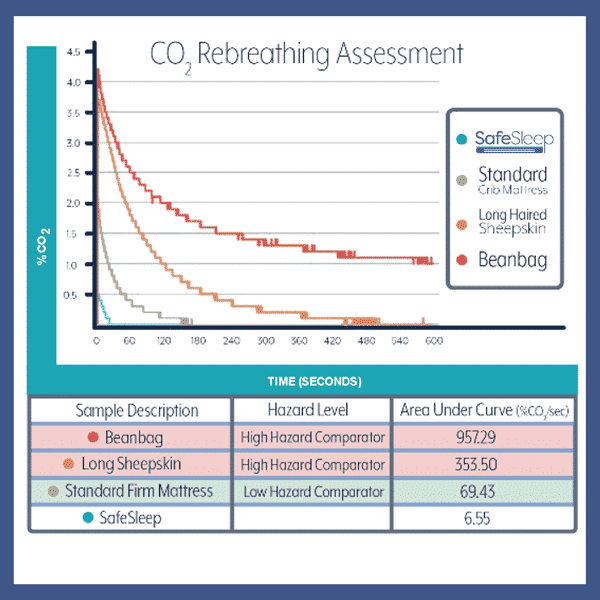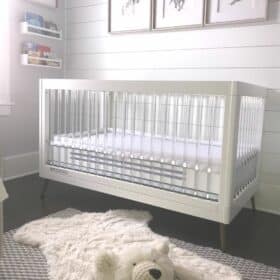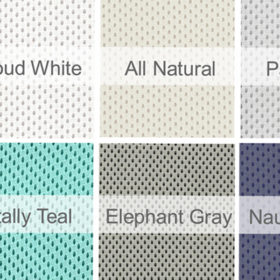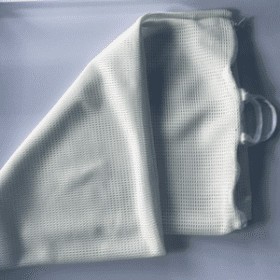No products in the cart.
We Support & Promote the “Back-to-Sleep” Initiative
We Know First Hand Additional Efforts are Necessary!
Peer-reviewed published studies and product testing support an air-permeable sleep surface that does not retain high levels of carbon dioxide as a safer option than the firm fiberfill crib mattress with a sheet to address the situation of the inexperienced infant who is placed supine and rolls prone. Deaths of infants placed on their backs and found face down on firm fiberfill crib mattresses and pads continue to occur because nothing prevents these infants from rolling.

Relevant Scientific Studies Supporting Air-Permeable Crib Mattresses With No Core or Filler:
Patrick L. Carolan, MD; William B. Wheeler, MD; James D. Ross, RRT, RCP; and James S. Kemp, MD, (2000), Potential to Prevent Carbon Dioxide Rebreathing of Commercial Products Marketed to Reduce Sudden Infant Death Syndrome Risk, Pediatrics, 105:4 774-779.
Bar-Yishay, E., Gaides, M., Goren, A., and Szeinberg, A. (2011), Aeration properties of a new sleeping surface for infants. Pediatr. Pulmonol., 46: 193–198. doi: 10.1002/ppul.21351.
Colditz PB, Joy GJ, Dunster KR. Rebreathing potential of infant mattresses and bedcovers. J Paediatr Child Health. 2002;38(2):192–195.
William W. Fox, MD and Thomas H. Shaffer, Carbon Dioxide Rebreathing Assessment of SafeSleep® Crib Mattress Sample. Intertek., wouso7330
if you are unfamiliar with air-permeable crib mattresses…
Infants in the prone position on fiberfill surfaces and surfaces with core materials show increased risk of rebreathing of carbon dioxide which leads to hypoxia – a condition commonly associated with SIDS. Scientific evidence shows air-permeable mattresses provide a “significant” decreased risk of rebreathing of carbon dioxide.
For medical professionals unfamiliar with the benefits of the SafeSleep® air-permeable crib mattress, ask yourself, “is a baby less likely to asphyxiate with their face down on a firm 6-inch-thick pillow, a 1-inch plastic encased play yard mat, a breathable surface with core material that can trap carbon dioxide, or a 1/8 inch thin open weave 3D fabric with nothing but air underneath it?”
The SafeSleep® has an air-permeability rate of over 300x, the currently recommended firm crib mattress with a tight-fitting sheet.
Learn more about scientific testing and studies on crib mattresses by reading, Crib Mattress Facts and Information.




